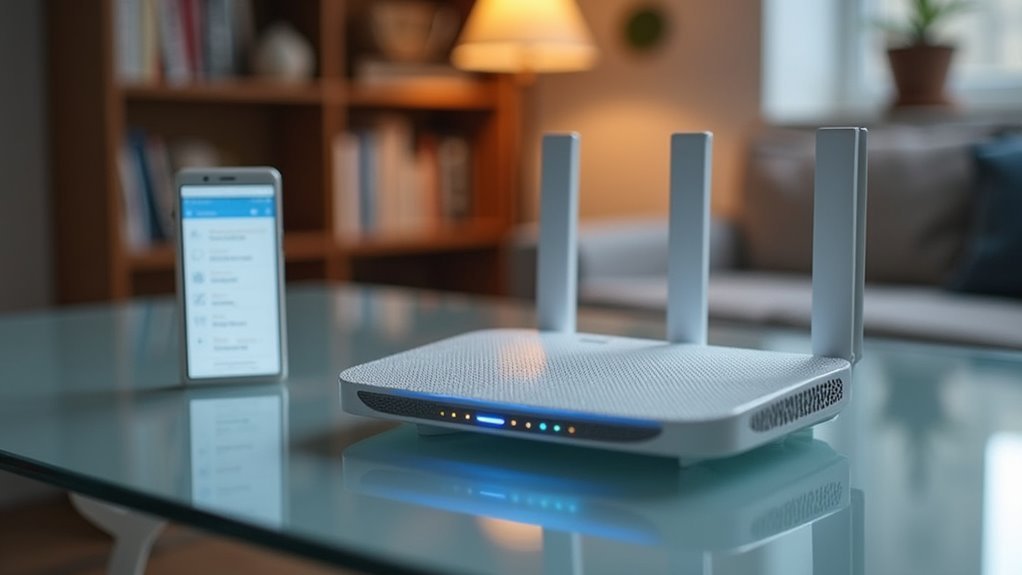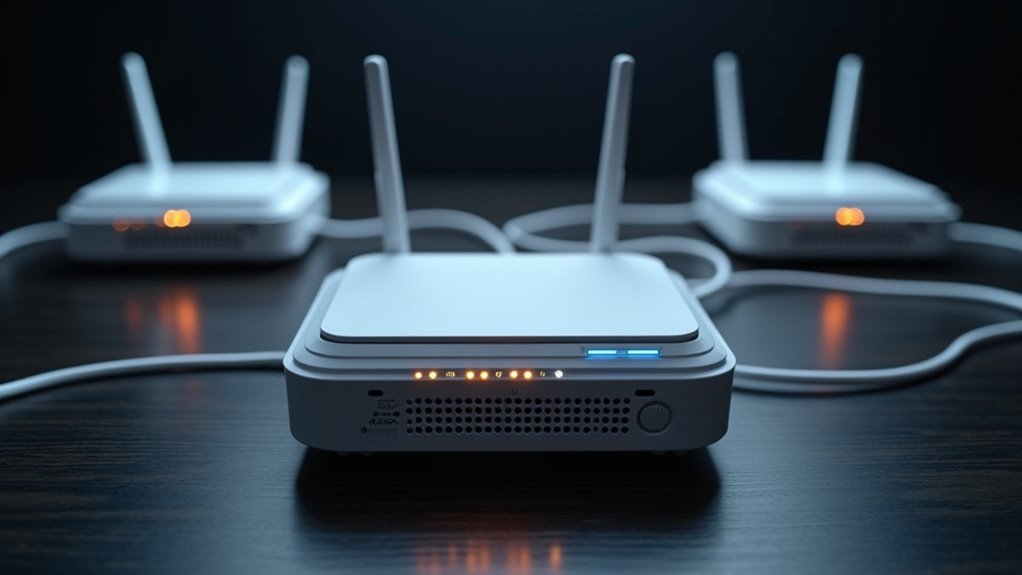You’ve probably struggled with the awkward dance of sharing your main WiFi password with guests, only to worry about network security afterward. Setting up a dedicated guest network on your mesh system eliminates this headache entirely, but most people don’t realize there are three distinct approaches that offer different levels of control and customization. The method you choose depends on how much access you want to maintain over your guest connections.
Setting Up Guest Networks Through Your Mesh Router App

When you’re ready to create a secure guest network, your mesh router’s dedicated app provides the most straightforward path to configuration.
Download the app associated with your mesh system and log in with your credentials. Navigate to Wi-Fi settings to locate the guest network option, where you’ll enable it and customize SSID details with a unique password.
Enable guest network isolation to separate guest devices from your main network, enhancing security and protecting personal data. Many systems generate QR codes for easy sharing.
Regularly monitor guest network activity through the app, tracking connected devices and bandwidth consumption. This monitoring provides valuable insights, allowing you to adjust settings as needed for peak performance.
Manual Guest Network Configuration via Web Browser Interface
While mesh router apps offer convenience, you’ll find that manual configuration through your router’s web interface provides deeper control over guest network settings.
Open your web browser and enter your router’s IP address, typically printed on the device label, to access the admin panel.
Launch your web browser and input the router’s IP address found on the device sticker to reach the administrative interface.
Navigate to the wireless or Wi-Fi section to locate guest network options. Enable the feature and create a unique SSID that distinguishes your guest network from the main one.
Configure robust security settings including WPA2 encryption and a strong password to protect internet access.
Save your changes and test connectivity with a device to guarantee guests can access the internet independently from your primary network.
Advanced Guest Network Isolation and Security Settings

After establishing your basic guest network configuration, you’ll need to implement advanced isolation and security measures to truly protect your main network from potential threats.
Modern mesh systems offer sophisticated guest networks with thorough network isolation through separate VLANs, preventing guest devices from accessing your main network’s sensitive information.
Essential security features include:
- WPA3 encryption providing robust password protection against unauthorized access attempts
- Device isolation preventing guest devices from communicating with each other
- Bandwidth restrictions and time limits managing network load and preventing abuse
Enable network security by blocking guest access to router settings and regularly updating your guest network credentials.
Many systems support QR codes for convenient guest access while maintaining strong security protocols.
These advanced isolation measures guarantee your mesh network remains secure without compromising guest connectivity.
Frequently Asked Questions
What Is the Easiest Mesh System to Set Up?
You’ll find Eero’s the easiest mesh system to set up. Its user-friendly app requires minimal technical knowledge, while Google Nest Wifi’s also incredibly simple, letting you configure everything through Google Home in minutes.
How to Create a Separate Wifi Network for Guests?
Access your router’s settings through a web browser, find the guest network option in wireless settings, create a unique SSID and password, enable isolation, and test connectivity.
What Is a Major Disadvantage of a Mesh Network?
You’ll face higher setup costs with mesh networks since they require multiple nodes for proper coverage, unlike traditional single-router systems that only need one device to operate effectively.
Does Enabling Guest Network Slow Down Speed?
You’ll experience some speed reduction when enabling guest networks since bandwidth gets shared among more devices. However, modern routers minimize this impact, and you can use prioritization settings to maintain performance.





Leave a Reply